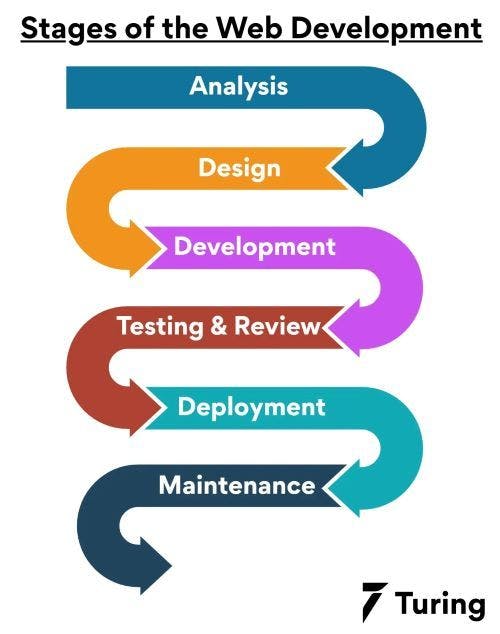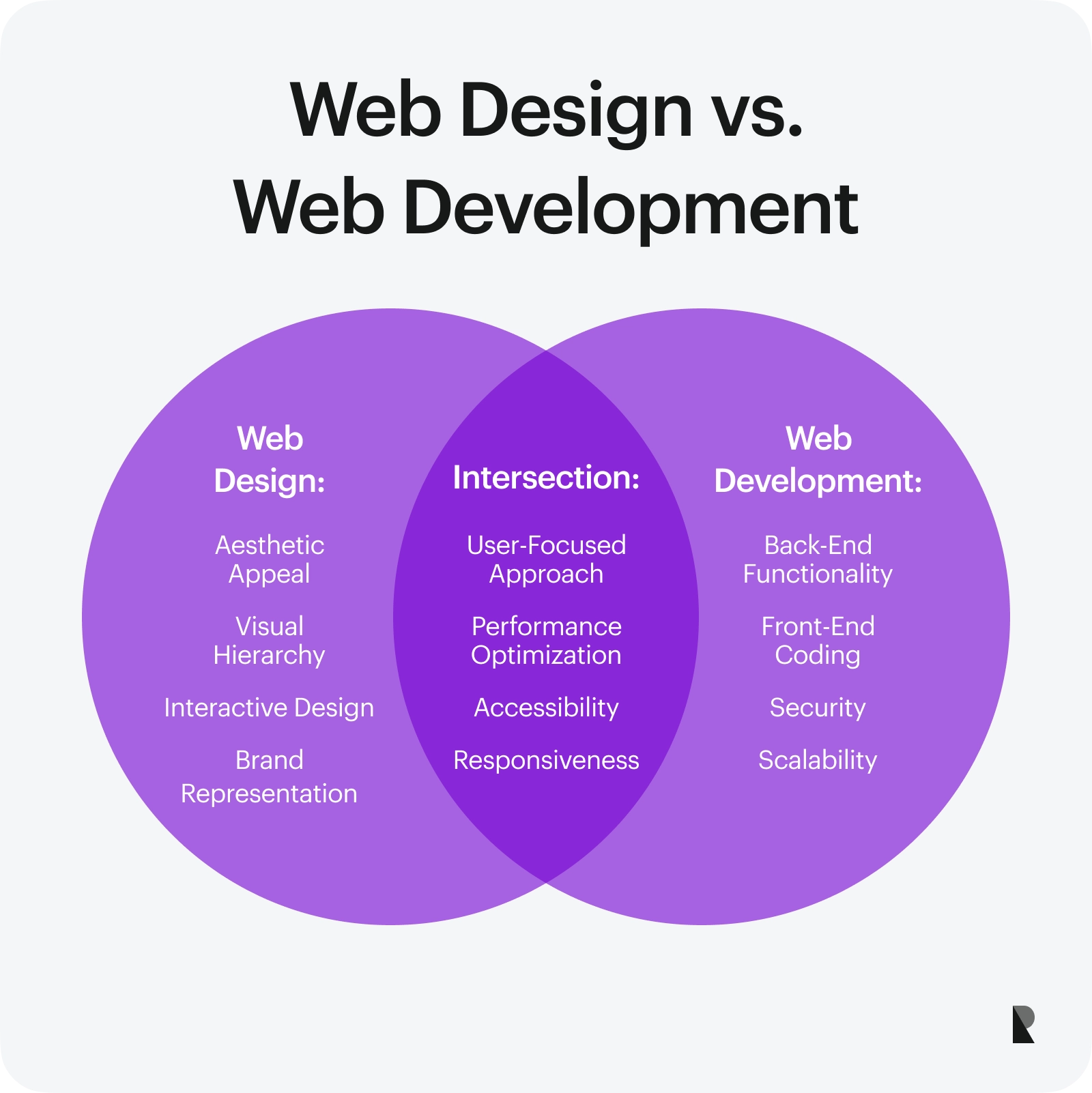Website design best practices for intuitive navigation
Wiki Article
Finding the Uses of Website Design for Enhancing User Experience
Web style considerably influences individual experience across electronic systems. By concentrating on customer requirements, designers develop sites that are not only visually enticing however accessible and also functional. Trick aspects such as responsive style and user-friendly navigating play crucial duties in enhancing use. Nevertheless, the obstacle hinges on recognizing just how these elements connect to fulfill developing customer expectations. The exploration of these aspects reveals understandings that could transform electronic interaction.Understanding User Needs and Assumptions
How can Web developers successfully align their productions with individual needs and expectations? To accomplish this, designers have to take part in detailed individual research study to record the choices, behaviors, and pain points of their target audience. Using approaches such as studies, meetings, and use testing, designers gather valuable insights that assist their decision-making process.Creating individual personalities can even more aid in envisioning various user sectors, making certain that style choices reverberate with real customers. In addition, developers must focus on instinctive navigating and clear phone call to action, which assist in smooth interactions.
The Importance of Responsive Design
As individuals increasingly accessibility sites on a selection of devices, receptive style has ended up being important for developing a positive individual experience. This strategy allows websites to adapt flawlessly to different screen sizes, ensuring that content is quickly readable and navigable, no matter whether a customer gets on a smart device, tablet computer, or desktop computer .Receptive layout boosts usability by providing a regular experience, lowering the need for excessive scrolling or zooming. Furthermore, online search engine favor receptive websites, which can enhance a website's visibility and reach. This layout technique additionally enhances advancement initiatives, as it removes the need for multiple versions of a website tailored to details devices.
Including responsive style not only fulfills individual expectations but likewise straightens with modern-day Web criteria, fostering interaction and complete satisfaction. Inevitably, it indicates a commitment to ease of access and inclusivity, pivotal aspects for any type of successful on-line presence.
Creating User-friendly Navigation
An efficient website design not only includes receptive formats yet likewise focuses on instinctive navigation, which is crucial for directing users via a site perfectly. Intuitive navigating guarantees that customers can easily find information without unneeded effort. Crucial element include a clear menu structure, rational categorization of content, and well-known icons or labels.Uniformity in navigating positioning throughout various pages cultivates knowledge, enhancing customer comfort. Utilizing breadcrumb routes permits customers to track their location within the website, helping in backtracking and expedition. Additionally, enhancing navigation for mobile devices is basic, as several users accessibility websites using tablet computers and smartphones.
Including a search bar can additionally improve the individual experience, allowing fast accessibility to certain material. Generally, user-friendly navigation minimizes stress, encourages longer website check outs, and eventually leads to higher individual complete satisfaction and involvement. By concentrating on navigating layout, Web developers can substantially enhance the total individual experience.
Utilizing Visual Hierarchy Properly
Effective Web design rests on the strategic use of aesthetic hierarchy, guaranteeing that individuals can easily navigate content and grasp the most vital info at a glimpse. By focusing on components based upon their importance, designers can direct individuals' interest toward important locations, such as headlines, calls-to-action, and crucial photos.Strategies such as dimension, contrast, shade, and placement play crucial functions in developing this pecking order. Larger message usually indicates better significance, while contrasting colors can draw attention to key activities. Furthermore, constant alignment and spacing assistance create an arranged design, making it simpler for customers to refine details rapidly.
In addition, incorporating images purposefully can enhance understanding and retention of web content. When utilized properly, a distinct aesthetic hierarchy not only enhances use yet likewise enriches the general user experience, permitting individuals to involve meaningfully with the internet site's purposes.
Enhancing Readability and Accessibility
Visual pecking order significantly impacts exactly how individuals connect with an internet site, however just as important is assuring that material stays legible and accessible to all audiences. Efficient website design utilizes clear typography, consisting of appropriate font style sizes, line spacing, and comparison to improve readability. Using high-contrast shade schemes can aid those with aesthetic problems, while larger message dimensions benefit customers with reading troubles. In addition, incorporating alt message for images assurances that people utilizing display readers can access crucial details.Designers should likewise consider the design and framework of web content, using headings and bullet indicate break up big blocks of text. This not just help skimming but likewise aids individuals with cognitive specials needs. Eventually, prioritizing readability and access fosters a comprehensive setting, permitting varied audiences to engage completely with the internet site's web content (web development). By resolving these components, Web developers can considerably boost the total customer experience
Including Involving Aesthetic Aspects
Incorporating interesting aesthetic elements is essential for boosting user experience in website design. Shade psychology plays a significant function in influencing customers' habits and feelings, while interactive graphics can catch attention and encourage expedition. With each other, these elements create an extra attractive and vibrant online setting.
Significance of Shade Psychology
The significance of color psychology in Web style can not be overstated, as it plays an important function in forming customer perceptions and behaviors. Colors evoke emotions and can influence exactly how individuals interact with a website. Blue commonly shares trust fund and professionalism and reliability, making it a prominent choice for monetary establishments. Alternatively, red can set off urgency and enjoyment, commonly made use of in sales promos. Recognizing the psychological results of color makes it possible for developers to produce a natural aesthetic experience that resonates with individuals. Furthermore, consistent shade schemes enhance brand name identification and recognition, ensuring individuals connect details shades with particular brand names. Ultimately, thoughtful application of color psychology can considerably improve individual involvement and satisfaction, making it a fundamental aspect of effective Web style.Utilizing Interactive Graphics
Engaging individuals through interactive graphics can significantly boost their total experience on a web site. These components, such as animations, infographics, and clickable visuals, promote a much deeper link in between users and the material. By urging exploration and engagement, interactive graphics can make complicated info more digestible and keep individuals' focus much longer. In addition, they offer a chance for customers to connect with this link the site in a read more purposeful method, leading to increased complete satisfaction and a higher possibility of returning. Nevertheless, it is necessary to balance interactivity with usability; overly complex graphics may confuse individuals. Correctly applied, interactive graphics can transform a passive watching experience right into an appealing trip, eventually adding to enhanced user experience and site efficiency.Continual Checking and Renovation Strategies
Continuous screening and enhancement techniques work as crucial components in optimizing website design for individual experience. By implementing repetitive testing, developers can collect real-time comments on customer interactions, allowing them to recognize discomfort factors and areas for enhancement - website development. A/B screening, usability testing, and warm mapping are reliable methods that offer insights into individual habits, making it possible for educated design choicesThese methods encourage a society of ongoing refinement, instead than a single launch. Web developers can make use of analytics devices to keep an eye on performance metrics, such as bounce rates and conversion rates, which direct required adjustments. Regular updates based upon user responses not only enhance performance but also foster individual satisfaction and commitment.
Ultimately, continual screening and enhancement develop a receptive website design atmosphere where user experience is prioritized, making sure that the website progresses along with user demands and technical developments. This positive approach leads to a much more reliable and appealing on the internet presence.
Frequently Asked Questions
Just How Can Shade Psychology Impact Customer Experience in Website Design?
Shade psychology greatly influences customer experience in website design by stimulating emotions and directing habits. Different shades can develop associations, improve readability, and affect individual involvement, inevitably forming assumptions of a brand or site's capability.What Function Does Typography Play in Customer Involvement?
Typography substantially affects look at these guys individual engagement by improving readability, establishing hierarchy, and communicating brand name personality. Reliable font options can catch focus, stimulate feelings, and guide users with web content, inevitably improving overall interaction and complete satisfaction with the web site.
Exactly How Do Cultural Distinctions Impact Website Design Preferences?
Cultural distinctions significantly affect Web style preferences, influencing color choices, format, navigating, and imagery designs. Comprehending these variants allows designers to produce even more relatable and engaging experiences customized to diverse user histories and assumptions.
What Equipment Can Assist Test User Experience Effectively?
Numerous tools, including Google Analytics, Hotjar, and UsabilityHub, successfully test individual experience. These platforms supply understandings right into individual behavior, help with A/B screening, and collect comments, helping developers make notified choices to boost general use.Just how Frequently Should a Web Site Be Upgraded for Optimal Individual Experience?
A website should be upgraded every 2 to 3 years to maintain perfect customer experience. Regular updates assure the style remains modern-day, responsive, and lined up with developing customer requirements and technological improvements, enhancing general engagement.Creating customer personas can further assist in imagining various individual sectors, guaranteeing that style choices reverberate with actual individuals. As individuals significantly gain access to web sites on a range of tools, receptive design has actually become essential for producing a positive user experience. Integrating interesting visual components is vital for enhancing individual experience in Web style. Eventually, constant screening and renovation produce a receptive Web design environment where user experience is focused on, making certain that the site evolves together with customer requirements and technical advancements. Shade psychology greatly influences individual experience in Web design by evoking feelings and leading actions.
Report this wiki page